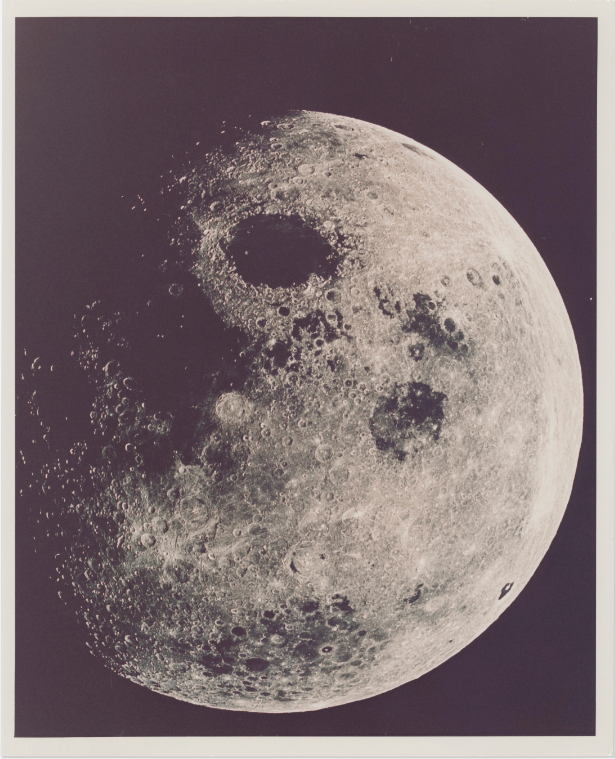Space Mission
Apollo 8, 21-27 December 1968
Photographer
William Anders
Photo Description
Vintage chromogenic print on fiber-based Kodak paper
10 h × 8 w in (25 × 20 cm)
Essay
Soon after trans Earth injection the Apollo 8 astronauts became the first humans to witness this extraordinary view of the Moon’s sphere in an orientation that is not seen by terrestrial observers, from above its eastern limb.
During their 20 hours in lunar orbit the crew captured close-ups of the desolate world from an altitude of about 60 nautical miles. However due to their arrival in the shadow of the Moon, it is only at the beginning of their homeward journey that they were offered unprecedented views of the Moon’s sphere in an orientation that is not seen by terrestrial observers.
William Anders took this historic first photograph of the whole Moon from a perspective not visible by terrestrial observers from above its eastern limb. Familiar frontside features such as the Sea of Tranquility, Fertility, Crises, and Nectar are easily identified. Features near the east limb as viewed from Earth, such as the Southern Sea, Smyth’s Sea, Border Sea, and the Crater Humboldt, can be viewed without extreme foreshortening. Lunar farside features occupy most of the right half of the picture.
“I think the Moon resembled what the Earth must’ve looked like before there was life. Or what it could look like after an all-out nuclear war.”
—Frank Borman (Chaikin, Voices, pg. 45)
